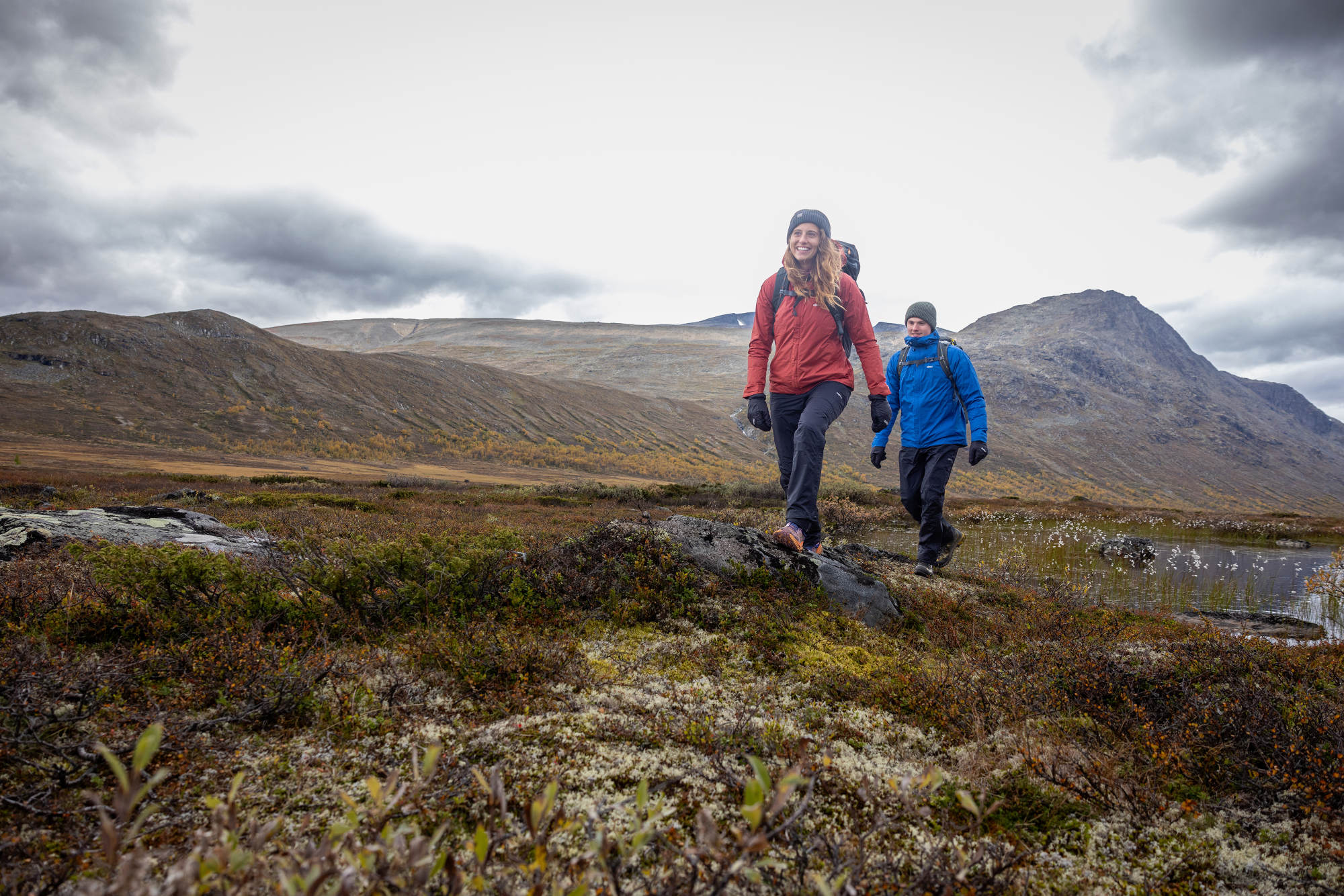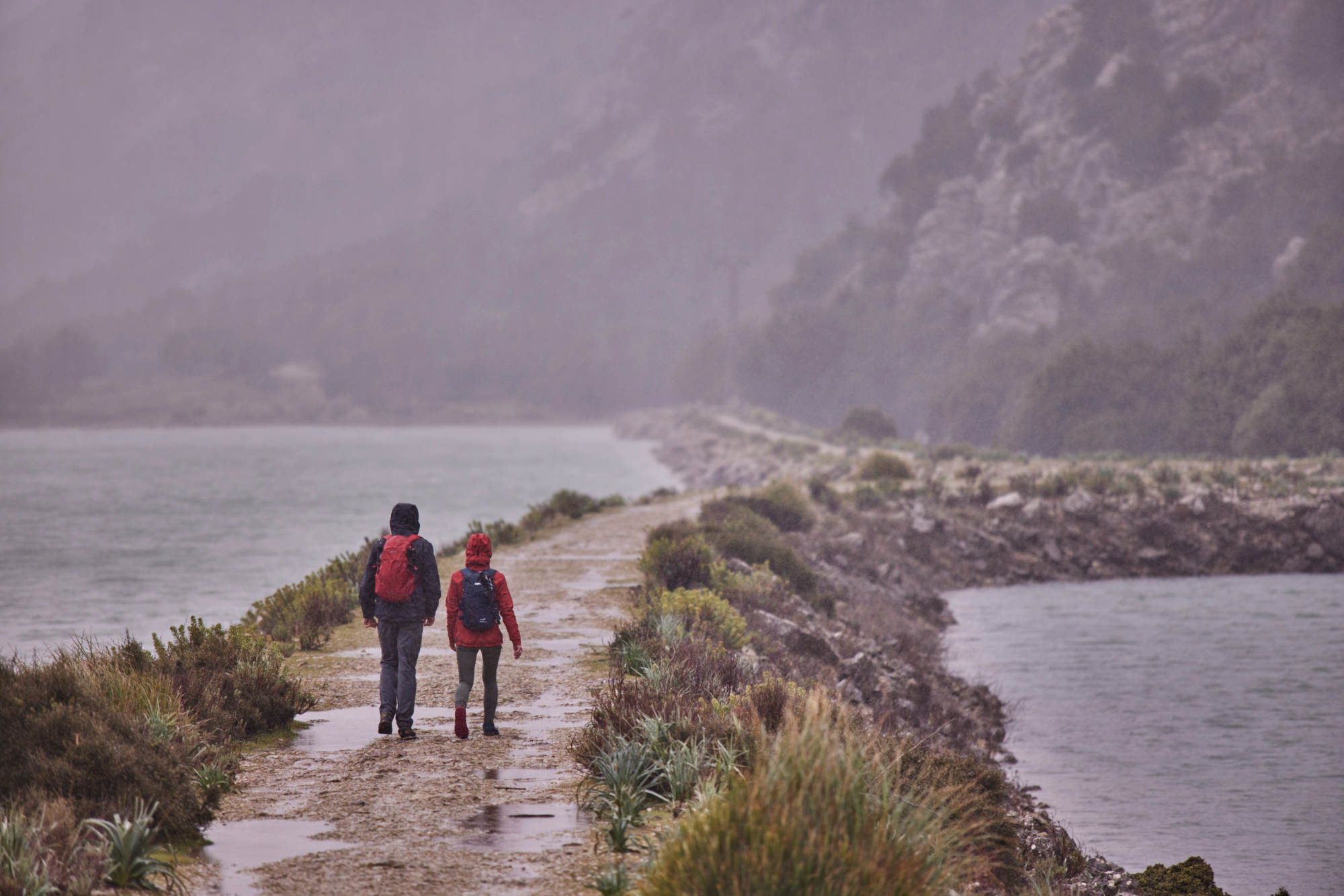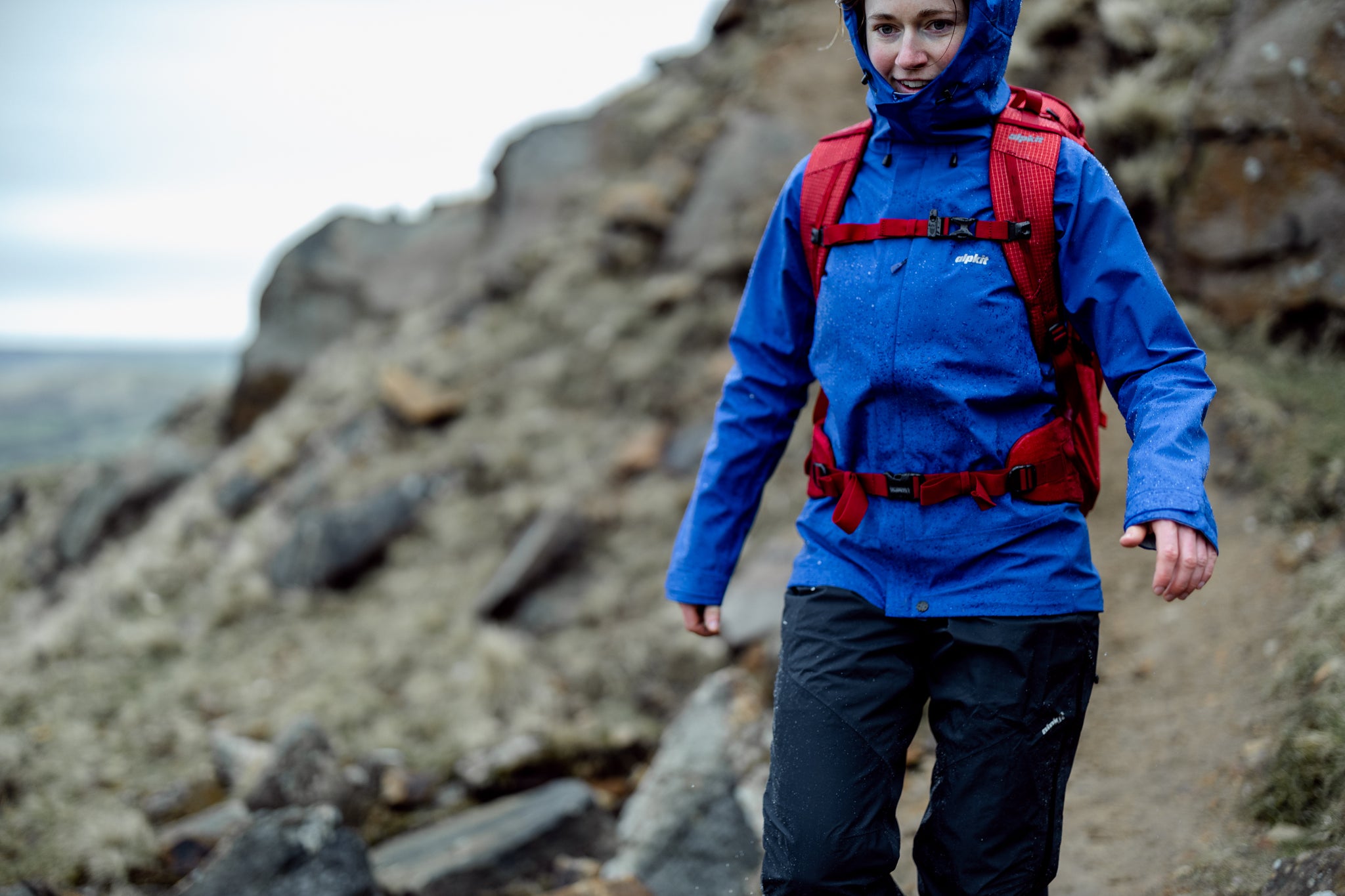
Create your personal climate control system with our 8 part guide to layering your clothing, featuring the latest technology tried and tested on real world adventures
Whether you live, work or play in the outdoors, our clothing is designed to make your time in it more comfortable. This is where we can help you.
Quick Start: Technical Outdoor Clothing Guide
New to technical clothing? Start with What Makes Clothing "Technical"?
Want versatility? Jump to Clothing that works across activities
Building your first kit? Go to Building Your Technical Wardrobe
Avoiding mistakes? Skip to Common Mistakes to Avoid

Why technical clothing outperforms regular clothes
Picture this: you're halfway up a hill when the weather changes. Your cotton t-shirt is soaked with sweat, your jeans are sticking to your legs, and that light shower has left you cold and clammy. Sound familiar?
The difference between struggling through your outdoor adventures and truly enjoying them often comes down to what you're wearing. Technical outdoor clothing isn't just marketing hype. It's gear designed to solve real problems you face when you're being active outside.
What makes clothing "technical"?
Technical outdoor clothing differs from everyday clothes in two crucial ways: functional design and performance fabrics.
Functional Design means every detail serves a purpose:
- Pockets positioned where you can reach them while wearing a backpack
- Seams placed to avoid chafing under straps
- Cuts that move with you rather than against you
- Vents that open where you get hot
Performance Fabrics handle the demands of outdoor activity:
- They move moisture away from your skin
- They dry quickly when they get wet
- They stretch and move with your body
- They resist tears from rocks and branches
These elements work together as a layering system. This means clothing designed to work together, adapt to changing conditions and your activity levels.

When you need to layer your clothing
Winter gets attention for being tough on clothing. But summer isn't exactly easy either. Your clothing needs to do the same job in both seasons. Keep you cool, warm, dry and protected from UV.
It needs to be washable, quick drying, durable, flexible and packable. It needs built-in utility, be repairable, recyclable. And of course, look good.
Each of those factors deserves its own post. But the good news is that most technical outdoor clothing works all year round.

Technical clothing that works across activities
The same system that keeps you comfortable hillwalking also excels for:
- Cycling: Moves sweat away and gives you freedom of movement
- Running: Breathes well and stays lightweight
- Climbing: Lasts longer and doesn't restrict your mobility
- Swimming: Insulates and moves with you
- Paddling: Keeps you warm when wet and dries quickly
- Travel: Packs small and easy to care for
- Camping: Comfortable and versatile
This crossover functionality means you need fewer specialist items. You save money and space while staying properly equipped for spontaneous adventures.
Benefits you will feel outdoors
We put a lot of thought into our outdoor clothing. Each piece is designed with purpose and a job to perform, however some factors are fundamental to almost every activity.
Moisture management
The Problem: Sweat makes you cold and uncomfortable
The Solution: Fabrics that move moisture away from your skin
Think of it like this: cotton acts like a sponge. It holds moisture against your skin. Technical fabrics act like a pump. They actively move moisture away from you to where it can evaporate. Dry skin is more comfortable skin.

Temperature regulation
The Problem: You get too hot when active, too cold when you stop
The Solution: Breathable fabrics and ventilation systems
Good technical clothing helps maintain your ideal temperature through:
- Breathable fabrics that release excess heat
- Zip vents for instant cooling
- Layering systems you can adjust on the go
Freedom of movement
The Problem: Restrictive clothing limits your performance and comfort
The Solution: Stretch fabrics and anatomical design
Technical cuts move with your body's natural patterns. Stretch fabrics and gusseted panels (extra fabric sections) flex where you need them most.
Durability
The Problem: Regular clothes wear out quickly with outdoor use
The Solution: Reinforced high-wear areas and tough fabrics
Strategic reinforcement in areas like knees, shoulders, and pockets means your gear lasts longer. You maintain comfort where it matters.

How to build your technical outdoor wardrobe
Don't be put off by the word 'technical'. It might feel like industry jargon. But it neatly separates clothing designed to solve outdoor problems from clothing made for style over function.
Start with the basics
If you're new to technical clothing, begin with these versatile pieces:
- A good base layer: The foundation of comfort (synthetic for high activity, merino for versatility)
- A reliable midlayer: Fleece or lightweight insulation for warmth
- A waterproof shell: Protection when conditions turn nasty
- Technical trousers: Durable, stretchy, weather-resistant
Consider your primary activities
- High Activity (running, fast hiking, cycling): Focus on breathability and moisture management
- Variable Activity (hiking, climbing): Focus on versatility and layer compatibility
- Cold Weather (winter sports, mountaineering): Focus on insulation and weather protection
Think long-term
Quality technical outdoor clothing is an investment. We design for the long run, not for landfill.
Reduce, reuse, repair and recycle aren't just buzzwords. They're the backbone of how we make and improve. From the first sketch to the final stitch we ask: will this last? Can it be fixed? Where does it go when it's done?
Look for:
- Repairability: Can it be fixed when damaged?
- Versatility: Will it work for multiple activities?
- Sustainability: Is it made responsibly and built to last?
Our approach: performance meets purpose
At Alpkit, we believe great outdoor clothing should:
- Perform well in real-world conditions
- Last longer through thoughtful design and quality materials
- Reduce environmental impact through sustainable practices
- Offer genuine value – not just in price, but in years of reliable use
We design each piece to earn its place in your kit. Whether you're planning an epic adventure or just need something for everyday use. Once you experience technical clothing you won't want to look back.
Common mistakes to avoid
Layering is about multiple layers working together. Don't blow your budget on the newest, most expensive piece of clothing. Even if it promises to place you on the summit of K2 in just 6 weeks. Believe in the system and spread your purchases wisely.

Here are some common mistakes we see people make:
Overcomplicating: You don't need specialist gear for every activity. Start with versatile basics.
Ignoring fit: Technical features won't work if the fit is wrong. Even if you bought it at 50% off. Focus on how it feels when you move.
Forgetting care: Technical fabrics need proper care to maintain their performance. Follow washing instructions.
Buying everything at once: Build your kit gradually. Learn what you need through experience.
Making your clothing work for you
The best technical clothing is gear you forget you're wearing. Because it's just doing its job. Keeping you comfortable so you can focus on your adventure.
Whether you're planning your first hiking trip or you're a seasoned adventurer looking to upgrade your kit, remember this. Good gear enhances your experience. It doesn't limit it with complexity.
Start simple, choose quality, and build a system that works for your life and adventures.
Next up in our series The Complete Guide to Outdoor Clothing: start from the core baselayer and build out your clothing system in layers
- The Complete Guide to Outdoor Clothing: Layering Systems That Work
- Base Layer Guide: Merino Wool vs Synthetic Materials
- Mid Layers Guide: Fleece and Natural Fibres
- Insulated Jackets: Down vs Synthetic Complete Guide
- Waterproof Jackets: Your Complete Guide to Staying Dry
- Outdoor Trousers, Shorts and Leggings: Your Complete Guide
- Hiking Socks Guide: Materials, Cushioning, and Fit
- Keeping Your Hands Warm: The Complete Guide to Outdoor Gloves


![Definition [Mens]](http://alpkit.com/cdn/shop/files/Definition-men-2.jpg?v=1760030579&width=768)

![Definition [Womens]](http://alpkit.com/cdn/shop/files/Definition-women-3.jpg?v=1764162500&width=768)
![Balance [Mens]](http://alpkit.com/cdn/shop/files/balance-mens-2025-reef.jpg?v=1764160608&width=768)
![Balance [Mens]](http://alpkit.com/cdn/shop/files/Balance-mens-1.jpg?v=1767019620&width=768)
![Balance [Womens]](http://alpkit.com/cdn/shop/files/balance-womens-2025-black.jpg?v=1764160433&width=768)
![Balance [Womens]](http://alpkit.com/cdn/shop/files/Balance-womens-3.jpg?v=1765272052&width=768)
![Fortitude [Mens]](http://alpkit.com/cdn/shop/files/fortitude-mens-2025-alder.jpg?v=1763659494&width=768)

![Fortitude [Womens]](http://alpkit.com/cdn/shop/files/fortitude-womens-2025-alder.jpg?v=1763659499&width=768)









![Gravitas [Mens]](http://alpkit.com/cdn/shop/files/mens-gravitas-2025-chilli.jpg?v=1764948171&width=768)
![Gravitas [Mens]](http://alpkit.com/cdn/shop/files/gravitas-location-1-RETOUCH.jpg?v=1765452161&width=768)
![Gravitas [Womens]](http://alpkit.com/cdn/shop/files/womens-gravitas-reef.jpg?v=1722461253&width=768)



















